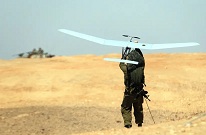“Notwithstanding the progress made by many countries in devising more robust systems of early warning and responsive protection - with far fewer people dying as a result of natural disasters - the COVID-19 pandemic has demonstrated that almost without exception, countries around the world are still ill-prepared to deal with multiple overlapping crises, which often cascade, with one triggering another,” said Armida Salsiah Alisjahbana, United Nations Under-Secretary-General and Executive Secretary of ESCAP. “Tropical cyclones, for example, can lead to floods, which lead to disease, which exacerbates poverty.”
Since the start of the pandemic, the region has been hit by multiple natural and biological disasters. At the same time, climate change has continued to warm the world, exacerbating the impacts of many of these disasters. The Asia-Pacific Disaster Report 2021, also launched today, shows that the pandemic, combined with the persistent reality of climate change, has reshaped and expanded the disaster “riskscape” in Asia and the Pacific.
The triple threat of disease, disaster and climate change is causing not only considerable human hardship but also significant economic losses. Currently, the annual average disaster-related losses are US$780 billion. This could nearly double, to around US$1.4 trillion, in a worst-case climate scenario. Choosing a proactive strategy of adapting to natural and other biological hazards would be far more cost-effective at an annual cost of US$270 billion.
In her statement during the opening session, the Special Representative of the United Nations Secretary-General for Disaster Risk Reduction, Mami Mizutori, voiced support for the Committee’s work and reiterated the need for immediate and decisive action to build disaster resilience.
“The string of record-breaking weather events show that we do not have the luxury of ‘waiting this out’ action must be taken now to address these risks,” she said. “This includes increasing international funding for disaster risk reduction and climate adaptation, especially for countries graduating from the least-developed category.”
Also speaking at the opening session, the Secretary-General of the World Meteorological Organization, Petteri Taalas, emphasized the importance of climate change mitigation efforts.
“All in all, successful climate mitigation doesn’t affect our everyday life very much,” he said, “but if we fail with climate mitigation the impact is going to be felt for centuries, even millennia.”
The final speaker at the opening session, the Secretary-General of the International Telecommunication Union, Houlin Zhao, highlighted the need for countries in Asia and the Pacific to make progress on digital transformation.
“It’s time for the Asia-Pacific region to rely even more on ICTs (information and communication technologies),” he said. “I am confident that countries in the region will access the unique opportunity presented by Covid-19 to accelerate digital transformation and leverage the historic role of ICTs in tackling the dual challenges of climate-related disasters and Covid-19.”
Today also saw the return of the ESCAP Regional Conversation series, with a Ministerial Panel on Disaster, Climate and Health Resilience. This was the first in a series of four events that will bring together eminent personalities and thought leaders to exchange ideas and solutions to some of the key challenges facing Asia and the Pacific.
In her remarks, Ms. Alisjahbana highlighted the need to build universal resilience to address the vulnerabilities the pandemic has exposed and to tackle rising levels of inequality and poverty. She called for a paradigm shift in disaster risk management toward a focus on investing in prevention and the building of resilience.







